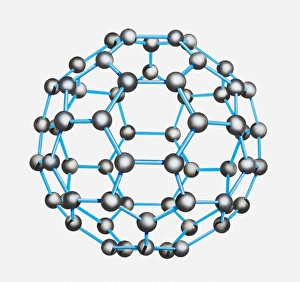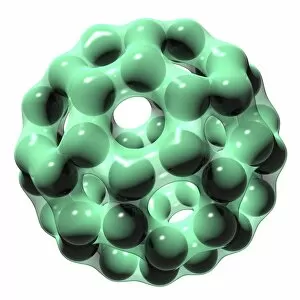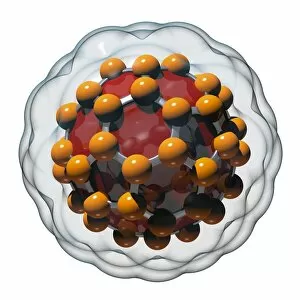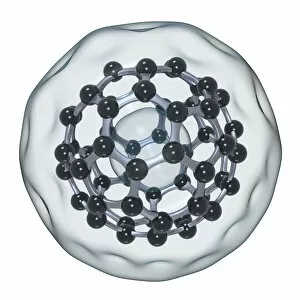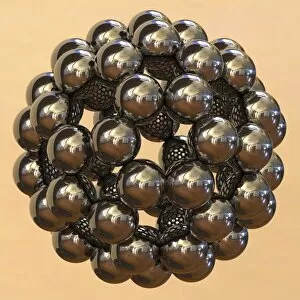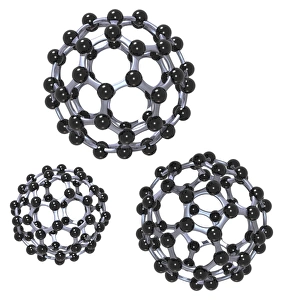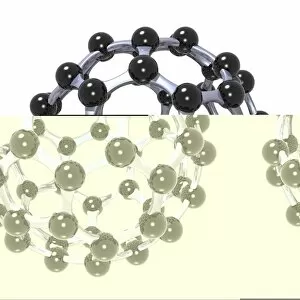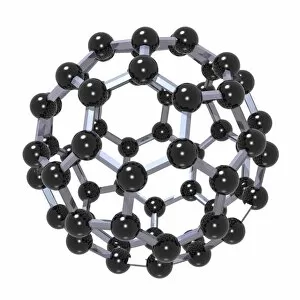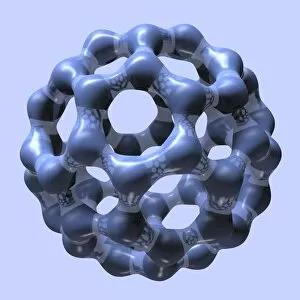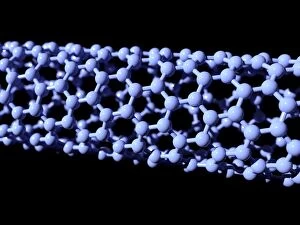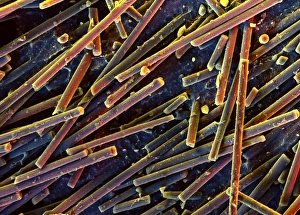Buckminsterfullerene Collection
"Buckminsterfullerene: Unveiling the Marvels of Carbon's Buckyball Structure" Behold the intricate beauty of Buckminsterfullerene, an extraordinary allotrope of carbon
All Professionally Made to Order for Quick Shipping
"Buckminsterfullerene: Unveiling the Marvels of Carbon's Buckyball Structure" Behold the intricate beauty of Buckminsterfullerene, an extraordinary allotrope of carbon. This captivating illustration showcases the molecule structure that earned it its nickname - the "buckyball. " With its unique arrangement of 60 carbon atoms, this soccer ball-shaped molecule has fascinated scientists and enthusiasts alike. Each atom in this mesmerizing structure is connected to three neighboring atoms, forming a network of hexagons and pentagons. The resulting symmetry is nothing short of breathtaking. Its discovery in 1985 by Richard Smalley, Robert Curl, and Harold Kroto sparked immense excitement within the scientific community. The molecular formula C016 / 8354 represents one variant among numerous possible configurations for buckminsterfullerene. Each variation exhibits slight differences in atomic arrangements but retains their spherical shape and intriguing properties. From C016 / 8372 to C016 / 8361, each depiction highlights the subtle variations within these remarkable molecules. Buckminsterfullerene possesses exceptional characteristics that make it highly versatile across various fields. Its hollow interior allows for encapsulation of other molecules or ions—a feature with potential applications in drug delivery systems or nanotechnology advancements. Moreover, buckyballs exhibit excellent electrical conductivity due to their delocalized electrons. Scientists have explored their use as superconductors or even as components in advanced electronics. Beyond its scientific significance, Buckminsterfullerene captures our imagination with its aesthetic allure. These illustrations showcase how nature can create astonishingly beautiful structures at a molecular level—reminding us once again that beauty resides not only on grand scales but also within microscopic realms. So let us marvel at Buckminsterfullerene's elegance—the symphony created by sixty carbon atoms dancing together harmoniously—an exquisite masterpiece sculpted by nature itself.

